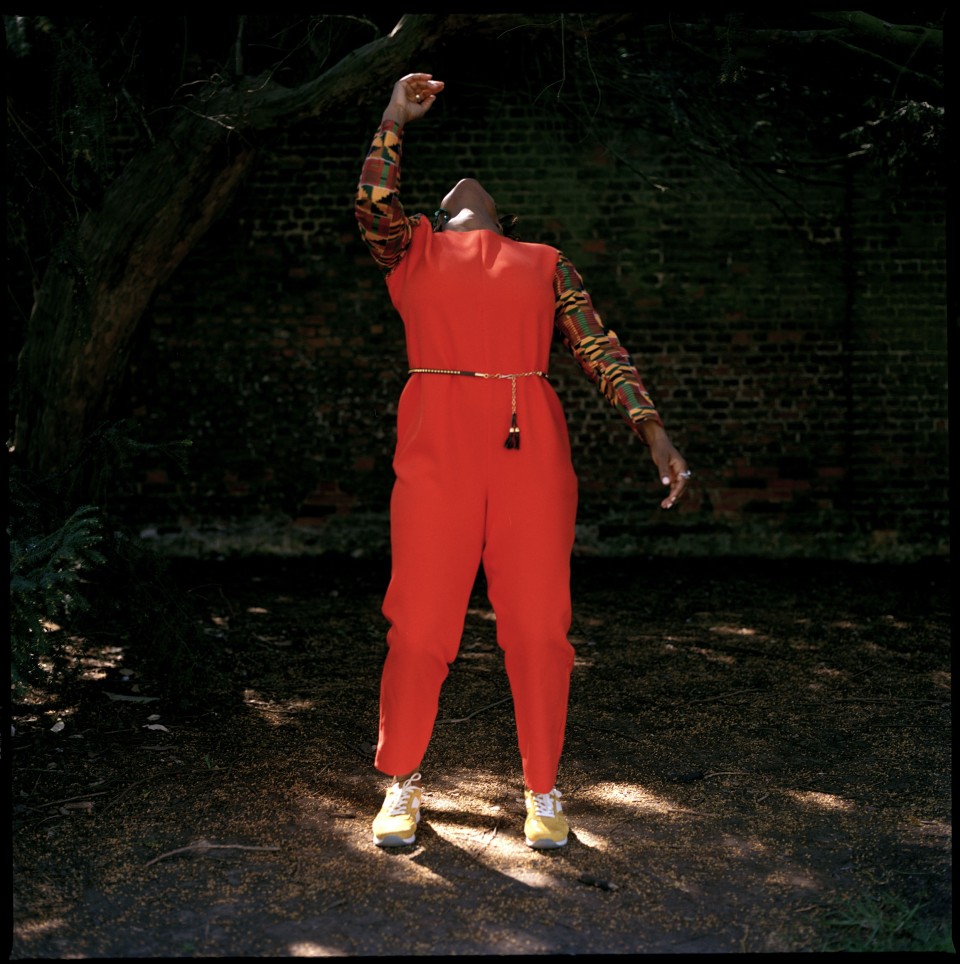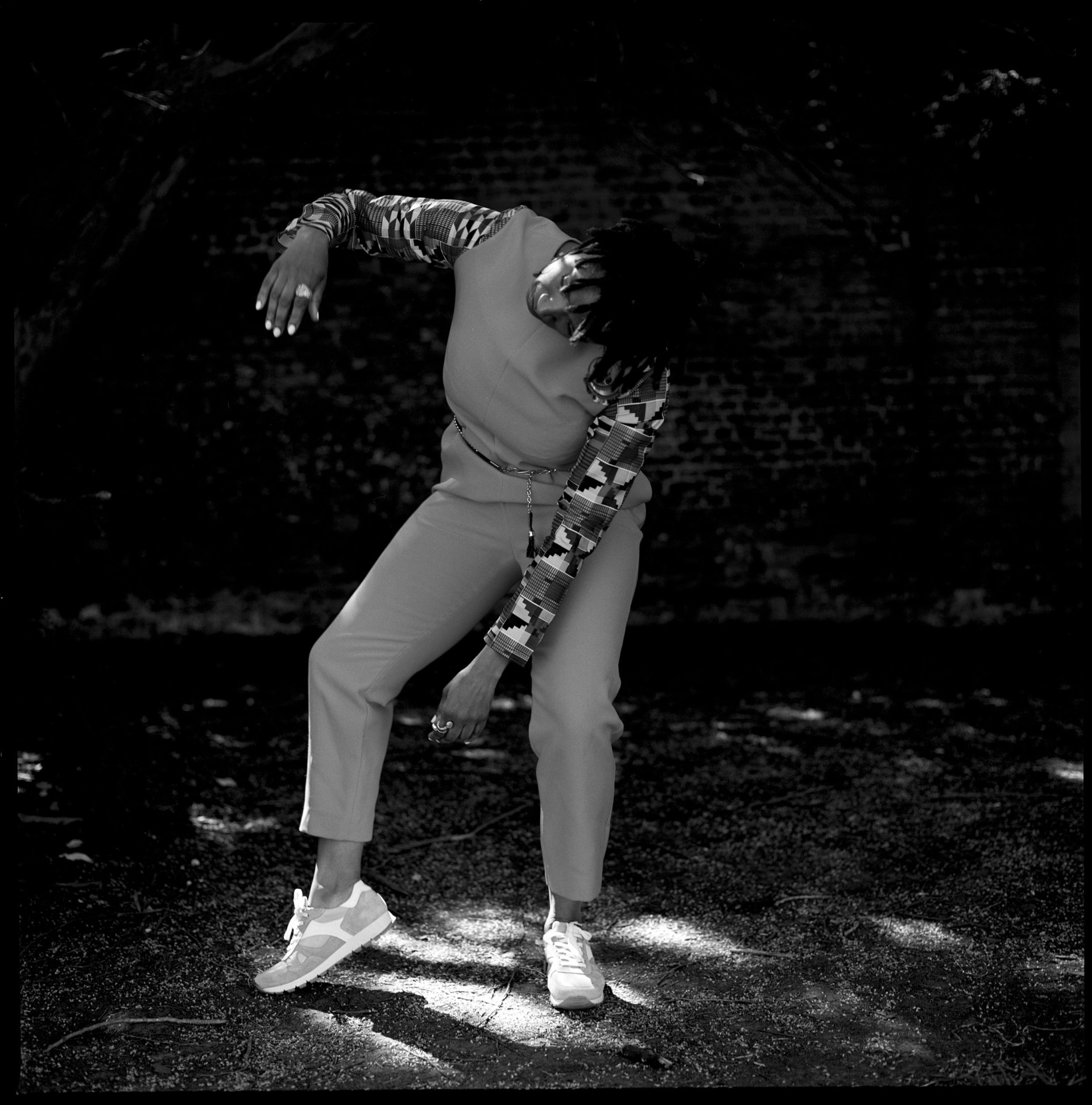Maori Karmael Holmes: What did you want to do as a child and how did you imagine what your future would look like?
Coral Messam: Like most kids, I didn’t have any inhibitions. I was one of those kids that didn’t like clothes, and whenever I heard music, I would just dance in front of the TV. Although I didn’t have the words then, I now realize I was having a spiritual experience. My dad would put on records on a Sunday afternoon—a mixture of different types of music, but mainly reggae because of where I come from. During the summer, music would be blasting out of my house—artists like Dennis Brown, Bob Marley, and Peter Tosh. I would be in the garden listening and hearing the bass.
This had an effect on my subconscious, and while I didn’t want to be a dancer per se, I thought that naturally everyone dances. At that point, I wanted to be a fashion designer because my mom was a seamstress. My mother would make the clothes that I designed, and kids in school would ask who made my jacket. I planned on fashion until college; I hadn’t yet learned that dance could be a career.
MKH: Did you see yourself as an artist, or did you feel that as the child of immigrants, you were pushed to choose a solid career path?
CM: I was really lucky. My dad was a country man and came from a trade but told me that I should do what makes me happy. So anything I did, I always felt I had the support of my mom and my dad and not the pressure to be a doctor, nurse, or lawyer. They supported my dreams.
MKH: What was the journey from being a dancer to becoming a movement director?
CM: I started as a dancer then acted for a while. I had a multifaceted background in terms of performance and wanted to bridge the two. This moved me into directing around 2009. Shortly after, I became a dance assistant for a show at the National Theater, Death and the King’s Horseman. The play was to incorporate dance. This shifted my mindset about roles, and I received my master’s degree a few years later because I wanted to understand this practice more. It remains important for me to be fluid.
MKH: Would you explain the difference between a movement director and a choreographer?
CM: The difference is that a choreographer is creating dance sequences set to music. A movement director’s responsibilities are the physical—looking at the physicality of an actor, looking at characterization, and looking at the atmosphere. It goes a bit deeper underneath the skin. For instance, if you have a character from the 1920s, you have to look at the structures of how you can build the character. What are the different ways of approaching them? What methodologies will be used? The role has much more range. You have to adapt and problem-solve. Sometimes this means doing far more than what we are paid to do—I look after the bodies of dancers and actors; I act as a physiotherapist. But now I’m solely here to create art. I can create a safe space, but my job is also to create the physical world and bring the script to life.
MKH: As a movement director, what does the process of preparing for a project look like?
CM: Each project is different, but what I generally do, whether it’s a period piece or a contemporary modern piece, is meet with the director and ask what they want. I do my research and try to disappear into the piece. I’ll turn to the library, books, the internet, and interviews. I also love going to galleries. If it’s a period piece, I want to go to a gallery that has work from that time period and context. I gather some of that physical world into my being. I’m also a massive fan of mood boards, particularly for TV and film. I think they are fundamental, because the medium is visual. I will collect images and cut stories and pictures of memories, and that’s a piece of my process. Lastly, I’ll physicalize what the world is. So if I’m looking at a Nigerian wedding dance, I will physically do the dance—fit it into my skin to understand what that means. What does it mean to the body to move in a particular way?
MKH: In that vein, can you talk about the emerging field of intimacy coordination?
CM: Someone asked me whether what we were doing was intimate, and I realized I had been performing and cultivating intimacy as a movement director. I’ve been navigating bodies and their interplay when they’re in a volatile or vulnerable state without necessarily knowing the guidelines. That is where intimacy direction came from. You have to understand bodies, an awareness that builds over time, and protect and create a safe space for people. You can’t assume that they’re going to be OK in the room, especially when looking at things such as kissing or being nude. When you’re a yes person as an artist and teacher, there is an importance in teaching yourself and your actors how to say no and finding the power in that. That can allow you to enjoy the experience of acting in an intimate space, knowing that someone has your back and your body is protected. This enables us to be able to do the work without being vulnerable in a way that is detrimental.
My previous experience with and love for burlesque also taught me about bodily freedom. When I taught burlesque dance classes to women, I took pride in creating a space where they could feel good in their bodies and be kind to themselves. So this evolution makes sense.
You have to understand bodies, an awareness that builds over time, and protect and create a safe space for people.



